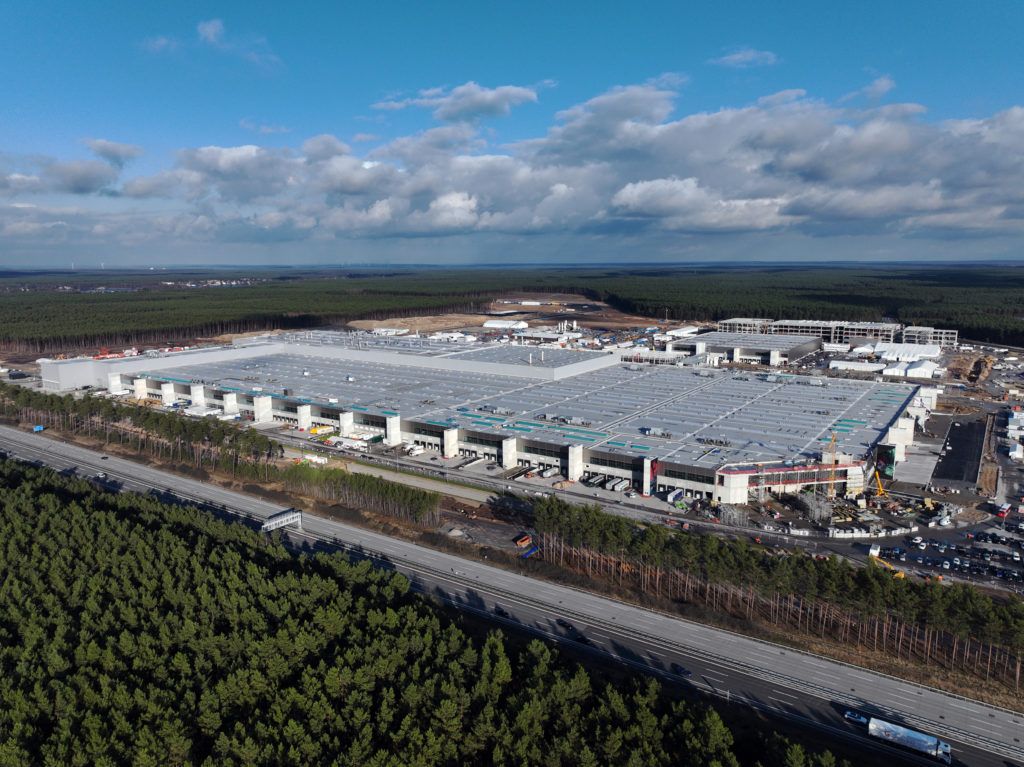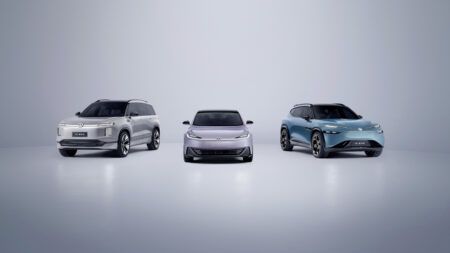When battery start up Britishvolt collapsed earlier this year, it was seen as a blow to a Gigafactory-powered EV future. Yet a succession of global crises doesn’t appear to have affected other regions, and this UK failure is starting to look like a very British problem.
Since the initial enthusiasm for gigafactories we have had a global pandemic, a supply chain crisis, a European war, an energy crisis, and widespread inflation affecting investment in industry projects. However, for all that, the road to net zero is set and while there are difficulties, such as with the supply of mineral resources used in battery chemistry, international and government will continue to drive investment in the electric century in which we live. The 1973 oil crisis highlighted energy security and diminishing fossil fuel resources. Since then, we have been moving towards more sustainable industry and transport accelerated by a growing awareness of climate change. This has meant a refinement of battery storage science to enable the transition, mass production and integration with vehicle manufacture efficiently and cost-effectively.
Recent events
Stephen Gifford, chief economist at the Faraday Institution, refers to the aftermath of the pandemic, coupled with worldwide supply chain disruptions and an energy crisis, as creating a challenging short-term environment for the development of gigafactories: “These economic shocks have led to a surge in commodity prices, affecting the costs of battery production in the short to medium term.” However, he says the long-term outlook remains largely positive.
Evan Hartley, analyst at Benchmark Mineral Intelligence, believes it is likely that many planned gigafactory projects globally will never come to fruition, as smaller producers unable to gain enough customers, or produce cells of the right quantity or quality demanded by the market, fail to realise viable production. “However, Tier 1 and Tier 2 producers which have significant capital, existing long term material supply and offtake contracts, and established production processes, will fare much better,” he says. “Currently Benchmark expects about 80% of planned production capacity in 2030 to come from Tier 1 and 2 producers, and while it is still true that not all of this will come online, it is a good indication that the Gigafactory pipeline remains healthy.”
While it is true that some companies with planned GWh scale battery cell production have either cancelled or stalled their plans, or fallen into liquidation, it was always expected that some projects would meet this fate.
Accounting for cancelled projects, Benchmark has seen its global gigafactory pipeline grow by 24 facilities in 2023, increasing pipeline capacity through to 2030 by 785 GWh, highlighting that investment into cell production is still very strong. “The regional gigafactory landscape and its future, however, has changed considerably over the past year, driven by legislation such as the Inflation Reduction Act (IRA),” says Hartley.
“Since the IRA’s inception, the US Gigafactory capacity pipeline has grown 68.6%, highlighting how many companies have pivoted strategy towards expanding capacity in the country to receive grants and subsidies. By comparison, European pipeline capacity has grown just 14.9% during the same period, as high energy costs, and a lack of financial incentives may have caused some cell producers to rethink new projects in the region.”
Dr Peter Harrop, chief executive of Zhar Research and until recently chairman of IDTechEx, says that one feature in the recent landscape has been headlong investment in lithium-ion batteries, which partly may be stranded assets from around 2033 or so: “Those factories could easily be repurposed to make successor battery chemistries but not the many battery-less solutions such as most long-duration energy storage (LDES).”
He explains that for the next 20 years lithium-ion batteries will remain a huge success, gradually eliminating or reducing problematic materials and recycling. “However, they will go ex-growth at some stage, as safer, as lower-cost LDES systems such as pumped hydro, liquid air, and compressed air, become viable.”
Whereas matters are improving around the world, the UK is lagging, but Gifford says that even in that country the green shoots of recovery are apparent: “Substantial plants are currently in the UK pipeline and there still exists a window of opportunity to secure more investment to meet the anticipated UK battery demand of five gigafactories by 2030,” he says. “Envision AESC is planning to open a second battery plant in Sunderland with an initial capacity of 11 GWh by 2024 and the potential to expand to 38 GWh later. There is speculation the JLR parent company Tata is on the brink of signing a deal to establish a large gigafactory in southwest England, marking a significant development in the UK battery manufacturing industry.”
Despite these promising developments and a healthy long-term outlook, there is no time for complacency. The UK risks falling behind other European nations if the pace of UK development does not accelerate. Investment and location decisions are anticipated to be made within the next 2 to 3 years, making the period from 2023 to 2025 a pivotal juncture and a make-or-break period for the UK Gigafactory industry.
Supply chains and localization
Gigafactories are nothing without batteries and they are nothing without the chemistry that makes them work. In 2019, a team of scientists, led by the UK Natural History Museum’s head of earth sciences, professor Richard Herrington, wrote to the Committee on Climate Change cautioning that fulfilling the UK government’s target of replacing its 31.5 million cars by electric vehicles by 2050 would mean using twice the current annual global supply of cobalt and would will require almost all the neodymium produced globally each year, three quarters of the world’s lithium, and “at least half” of the world’s copper. Herrington said later, however, that Gigafactories linked to car production plants made sense and although raw material supply remains an issue, by around 2035 there will be enough end-of-life batteries to provide around 40% of the metals needed for new batteries.
However, Dr Simon Michaux, associate professor of geometallurgy at the Geological Survey of Finland, is concerned that the mining of minerals is too scattered all over the world. “What may happen is each mine site may produce a more concentrated higher value product,” he says. “Many mines will shut down as they would be unviable in a low energy future (wind and solar units, but much less than planned).”
So, localisation is increasingly seen as desirable: a 2023 IdTechEx report reveals that, “Europe is expected to grow its share of manufacturing capacity to 22% by 2027, up from approximately 11% in 2021, while US manufacturing capacity is expected to grow to 18% of global capacity from approximately 7% in 2021.”
Hartley says localisation of the supply chain has been a big part of battery materials companies’ strategy for some time now. Regions or nations with developed midstream markets are far more likely to host more cost efficient, successful gigafactories, as access to cheaper cathode and anode materials is critical. “Outside of China, and parts of Asia which have established excellent localised supply chains, Debrecen in Hungary, or Hauts-de-France in France, are excellent examples of regions attracting investment into both cell, CAM, and pCAM production capacity. It is areas such as these which will be at a great advantage when it comes to maintaining sustainable battery supply.”
The supply of minerals is not the first problem the industry faces, says Michaux. “Before that is a lack of refining capacity. The Chinese systems are large but not that large, even if we go back to doing business freely. And then there is the risk of currency default. The minerals shortfall is the biggest hurdle of all but not the only one. The planned Giga factories may well be needed, but only a few of them will be authorised, based on offtake agreements for feedstock and products.”
The current production of raw materials is far from enough to answer increased demand. By 2040 there is projected to be demand for around 520kt cobalt, 3,000kt LCE and 4,000kt nickel under a projection of 5.9 TWh of global EV battery production. According to the IEA (International Energy Agency) EVs and battery storage will account for around half of the mineral demand growth from green technologies over the next two decades. It also suggests mineral demand (by weight) is likely to be dominated by graphite, copper, and nickel by 2040, with lithium seeing the fastest growth rate. However, a shift towards lower cobalt chemistries for batteries will help to limit growth in cobalt, displaced by growth in nickel.
Dr Anwar Sattar, principal engineer battery recycling at University of Warwick manufacturing group (WMG) is sanguine. He says the expectations that there will be a mineral shortfall are somewhat exaggerated. “Even if there is such a shortfall, innovations in battery chemistry and design will overcome it. For example, in China, lithium iron phosphate (LFP) chemistry is gaining popularity. LFP chemistry does not use nickel or cobalt but iron and phosphorus – cheap and readily available material. LFP chemistry also uses around half the lithium that other chemistries such as NMC and NCA use. LFP batteries do not offer the same energy density on a cellular level but innovations in pack design have allowed Chinese companies to squeeze more cells into the same volume of space, thereby increasing the pack energy density and giving comparable vehicle range. We are developing an innovative process to recycle LFP chemistry cells, something which very few companies can do economically.”
The gigafuture
Global politics are seeing what some describe as a ‘battery war’ playing out between the East and the West. “China has clearly delivered some slick forward planning and gained control of huge parts of the battery supply chain and manufacturing,” says Ben Kilbey, battery communications expert and founder of communications advisory Bald Voodoo. “Now the US and Europe are in survival mode to catch up.”
However, even the niche sectors can be worth billions. “So, rather than describing what’s unfolding as a war,” says Kilbey, “I’d describe it as evolution and adaption. We need a world powered on renewable energy and without batteries that’s incredibly difficult. We will continue to see the gigafactory economy evolve and mature and the biggest issues will be solved by technology advancements, not moonshots. With challenges come opportunities.” Gigafactories and EVs will both adapt to the new reality says Michaux. “Much of what we take for granted for now will not be available. The ability to make EVs will dictate what is available on the market. Now the market is driven by whim and desire. I think this will change to: we make do with what we can get. Europe is degrading as a market. We are moving into a world where this not as much to pass around. I can see many mining operations becoming nationalized for example. This has already started in Chile. All nations and all big corporations have been told to secure their raw material supply. The world of sharing could be ending.”
Gigafactories, like other elements of the internet of energy, represent current technology being materialised gradually. Net zero requires 100% commitment and a lot of hard work, which takes time. The future is here, but its realisation may be a little delayed and different from how it was first envisaged.





